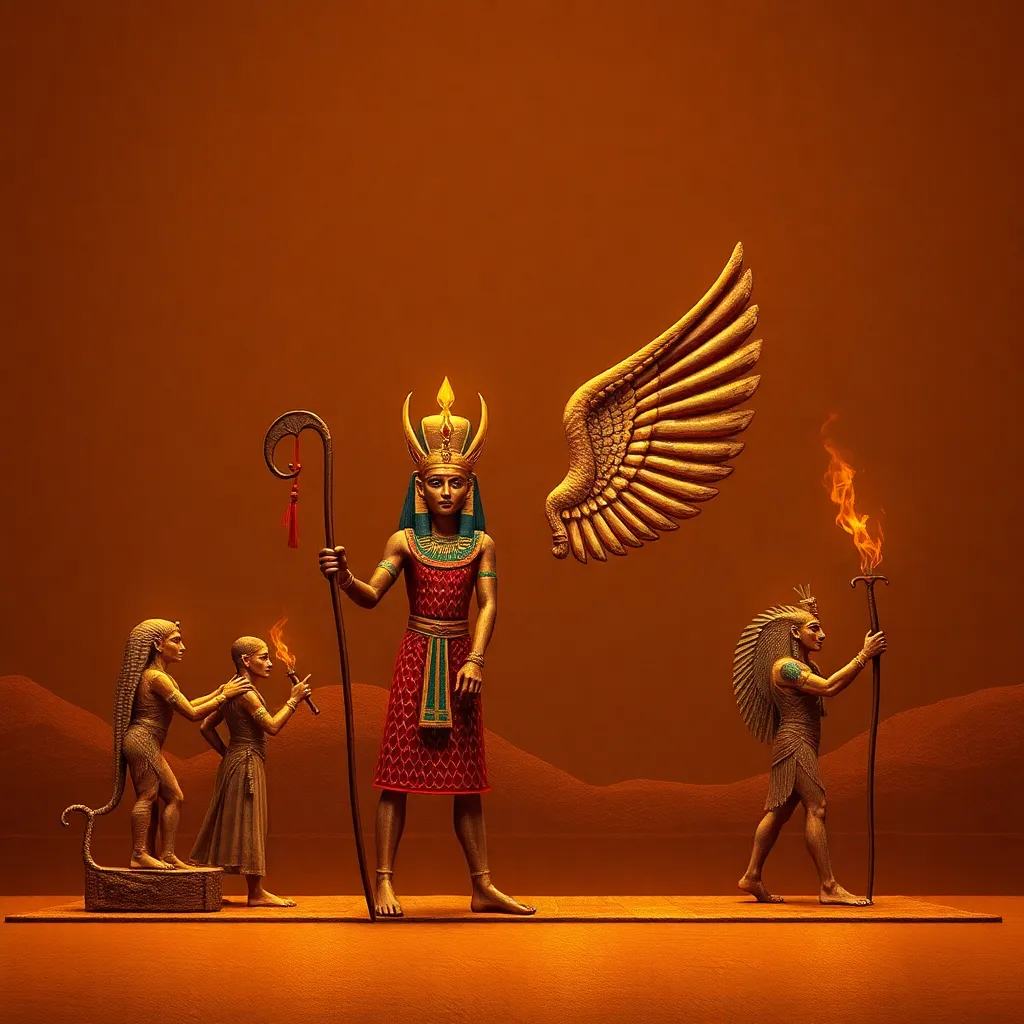Atenism and Its Connection to Egyptian Mythical Narratives
I. Introduction
Atenism, a unique religious movement in ancient Egypt, advocates the worship of Aten, the sun disc, as the sole deity. It emerged during the reign of Pharaoh Akhenaten in the 14th century BCE and marked a significant departure from the traditional polytheistic practices that characterized ancient Egyptian religion.
Egyptian mythology is rich and complex, featuring a pantheon of gods and goddesses, each with their own stories and significance in the cosmos. This article aims to explore the interplay between Atenism and Egyptian mythical narratives, highlighting how Atenism both influenced and was influenced by the broader tapestry of Egyptian mythology.
II. Historical Context of Atenism
Atenism emerged during a transformative period in ancient Egypt, specifically under the reign of Akhenaten, who ruled from approximately 1353 to 1336 BCE. Akhenaten’s radical reforms included the establishment of Aten as the primary deity, leading to a significant shift from traditional polytheism to a form of monotheism.
This transition was not merely a change in worship but involved a complete reconfiguration of Egyptian religious practices, art, and society. Key beliefs of Atenism include:
- The rejection of the traditional pantheon of gods.
- The belief in Aten as the creator and sustainer of life.
- The emphasis on the sun’s role as a life-giving force.
III. Core Tenets of Atenism
The worship of Aten as the sole deity is the cornerstone of Atenism. Unlike the traditional Egyptian gods, who had distinct personalities and domains, Aten is depicted as an abstract force, represented primarily as a solar disk radiating light and life.
Symbolism of the sun is central to Atenism. The sun’s rays are often illustrated extending to the pharaoh and his family, signifying divine favor and connection. This differs significantly from traditional Egyptian beliefs, where deities like Ra, Osiris, and Isis had specific roles and attributes.
In comparison to traditional Egyptian gods, Aten is more of a universal force rather than a personalized deity. This shift in focus represents a significant theological evolution within Egyptian belief systems.
IV. Egyptian Mythology: An Overview
Egyptian mythology is characterized by a rich array of deities and complex narratives that explain the workings of the universe, human existence, and the afterlife. Key figures in this mythology include:
- Ra: The sun god and a central figure in Egyptian cosmology.
- Osiris: The god of the afterlife and resurrection.
- Isis: The goddess of magic and motherhood.
- Horus: The sky god and protector of the pharaoh.
Common themes in these narratives include creation, death, and rebirth, illustrating the Egyptians’ understanding of the cyclical nature of life. Myths played a crucial role in Egyptian culture, serving to reinforce social order and religious practices.
V. Intersections of Atenism and Egyptian Mythology
The intersections of Atenism and Egyptian mythology reveal shared themes, particularly concerning creation and divine order. Both belief systems emphasize the importance of the sun, but Atenism reinterprets these themes through a monotheistic lens.
Atenism also reinterpreted existing myths. For instance, the traditional creation myth involving multiple gods was streamlined in Atenism to focus on Aten’s singular role as creator. This fusion of Atenism with traditional myths resulted in a unique religious narrative that challenged established beliefs.
VI. The Impact of Atenism on Egyptian Mythical Narratives
Atenism significantly impacted religious practices and narrative structures in ancient Egypt. The shift to monotheism led to a reduction in the worship of other deities, which altered the landscape of Egyptian mythology.
Moreover, Atenism influenced later Egyptian religious thought, paving the way for new interpretations of divine order and morality. After Akhenaten’s reign, many of these ideas persisted, although they were often reabsorbed into a polytheistic framework.
The legacy of Atenism can be seen in the religious reforms that followed Akhenaten, which included a resurgence of traditional gods but with lingering influences from Atenist beliefs.
VII. Scholarly Perspectives on Atenism and Myth
Scholarly interpretations of Atenism and its significance in Egyptian mythology vary widely. Some scholars argue that Atenism represents a critical moment in the evolution of monotheism, while others view it as a temporary deviation from traditional practices.
Debates surrounding the significance of Atenism often focus on its impact on later religious developments in Egypt and its relationship with other theological systems. Archaeological findings have also contributed to the understanding of Aten’s influence, with artifacts depicting Aten worship shedding light on the nature of this religious movement.
VIII. Conclusion
In summary, Atenism represents a fascinating chapter in the history of Egyptian mythology, illustrating the complex interplay between monotheistic beliefs and traditional polytheistic narratives. The worship of Aten as the singular deity redefined many aspects of Egyptian religious life and mythology, with lasting impacts that can be traced through subsequent periods.
Reflecting on the significance of Atenism in Egyptian mythology highlights its role as both a revolutionary movement and a contributor to the rich tapestry of ancient beliefs. For those interested in exploring this topic further, additional research could delve into specific myths reinterpreted under Atenism or the archaeological evidence surrounding Aten worship.




